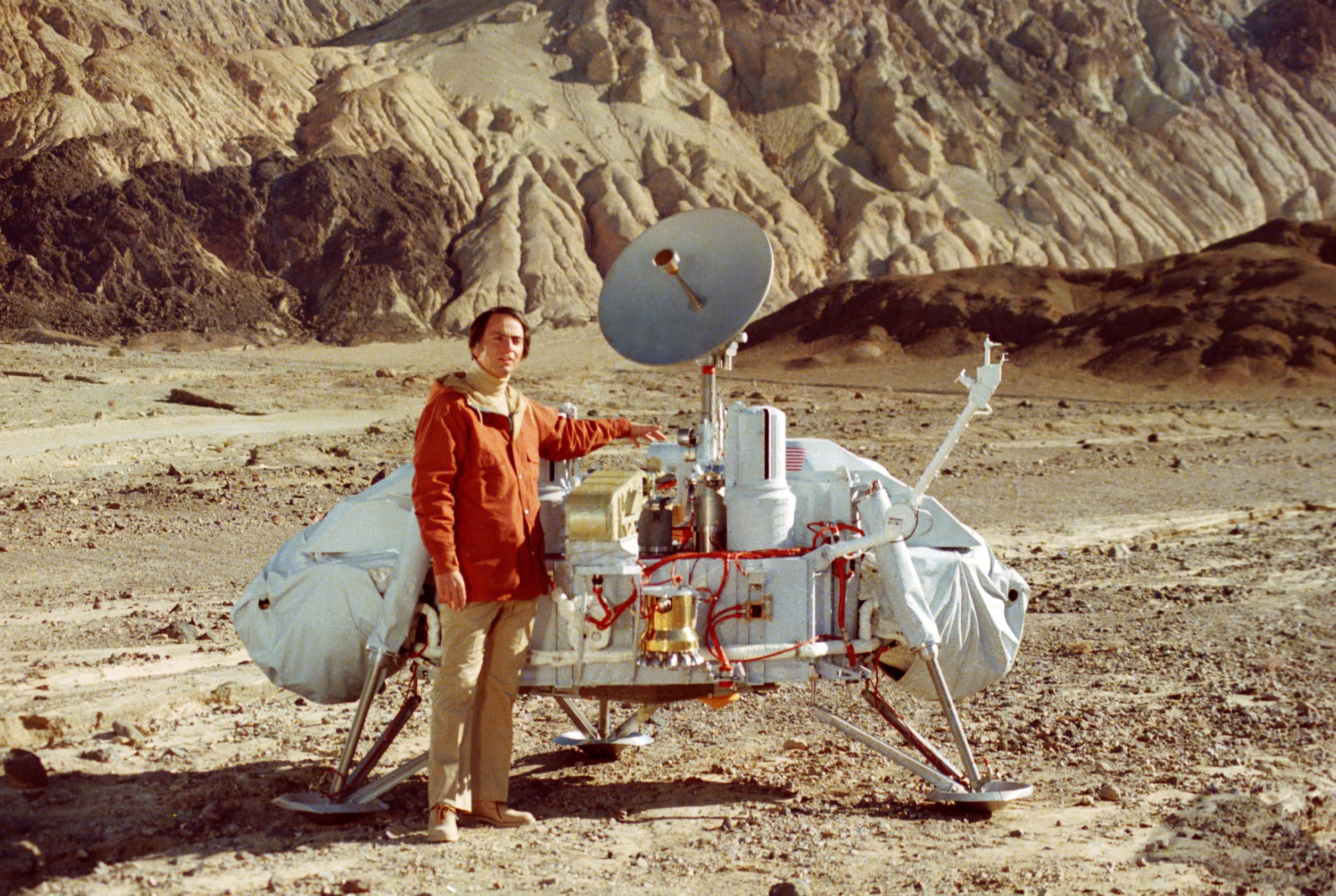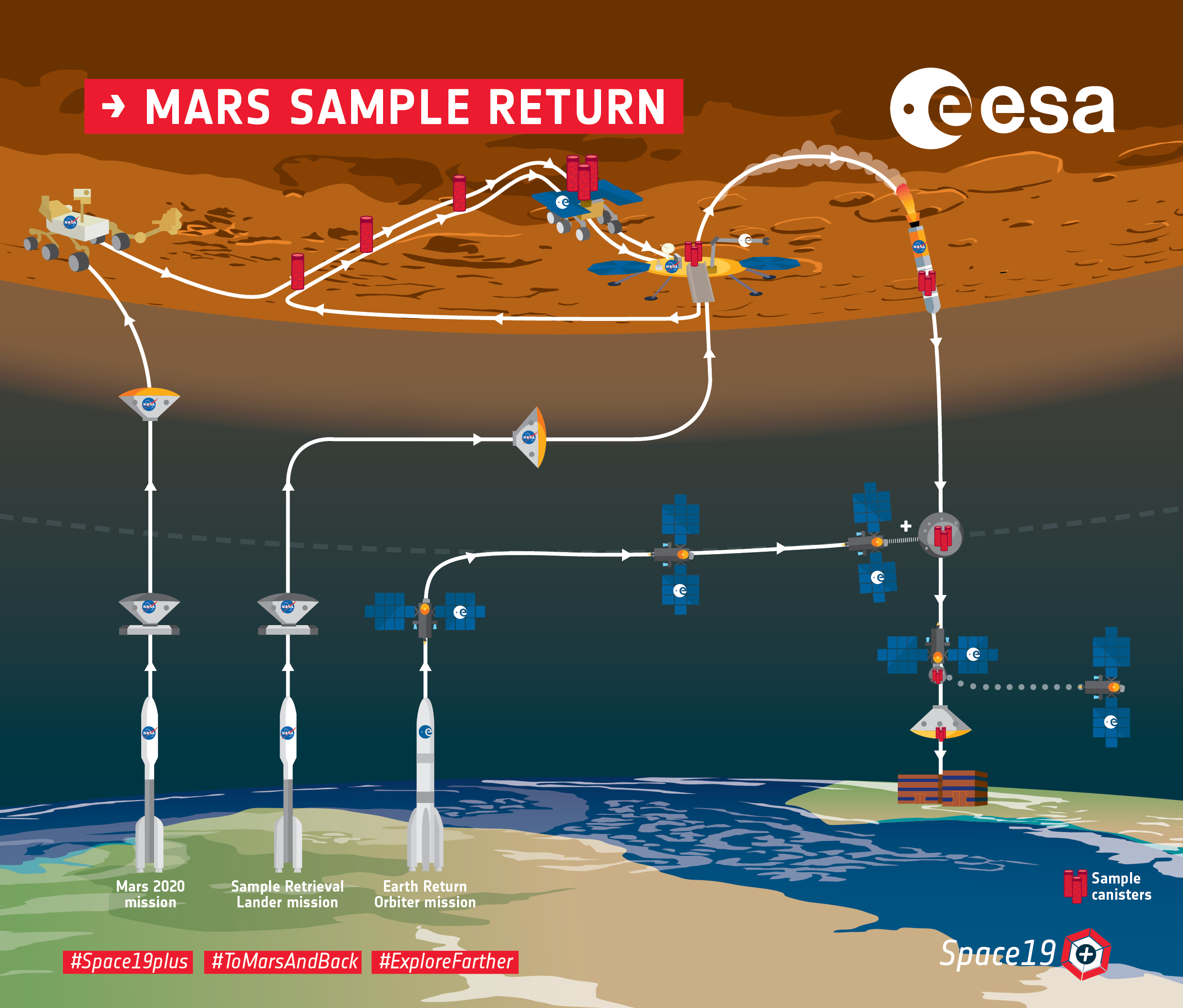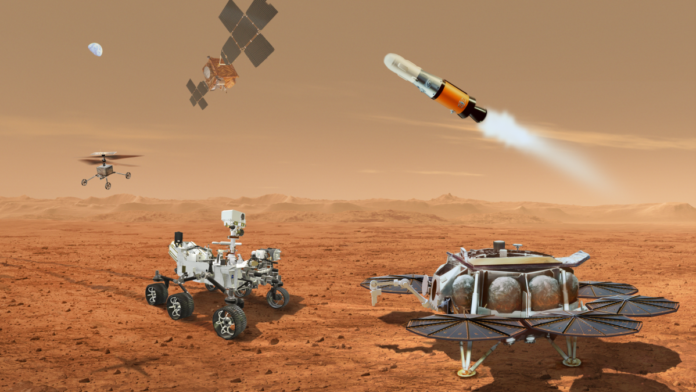NASA’s Perseverance rover is busily wheeling and dealing with Mars at Jezero Crater, picking up samples of that way off world.
A key chore for the Perseverance rover is snooping around for astrobiology clues, including caching specimens that may show signs of old age on Mars – ancient microbial life.
To that end, the robot has dropped on the planet ten sample tubes, stuffed with a range of Martian geology. There are more tube releases in the future. Of the 43 tubes hauled around by Perseverance, 38 are for collecting samples, and five are “witness tubes” designed to certify the cleanliness of its sampling system throughout the mission.
But what exactly are the possible “take away messages” from Mars that we could learn by launching samples our way?
Related: Here’s how NASA and Europe will bring Mars samples back to Earth (video)
Some of these extraterrestrial goodies are to be express-rocketed to Earth in the 2030’s, if all goes to plan. Getting that precious freight back to Earth and evaluated in labs is an international and elaborate affair guided by collaboration between NASA and the European Space Agency.
The Mars machinery muscle required: A healthy Perseverance rover, a sample return lander outfitted with a fancy robotic transfer arm, a couple of Ingenuity-like helicopters, a powerful Mars Ascent Vehicle to loft samples to Martian orbit and an Earth Return Orbiter that will launch an Earth Entry System capsule to eventually plop down in the Utah desert.
Of course, the Mars Sample Return (MSR) interplanetary relay enterprise is a high-roller undertaking. It will demand lots of moolah, in the multi-billions of dollars.
But the prospective scientific payoff is palpable. Investigators are eager to scope out the bits, pieces, and atmosphere of the Red Planet that will be hurled to Earth.
Read more: Perseverance Mars rover stashes final sample, completing Red Planet depot
Absolute ages
One of those excitedly waiting for that science bounty is Amy Williams, an assistant professor in geological sciences at the University of Florida in Gainesville. She is a NASA Perseverance rover participating scientist and has been a member of the NASA Curiosity rover science team since 2009.
Williams said that one of the things that’s so appealing about the sample cache is that by returning some of the igneous rocks (made by lava or magma) from the crater floor, scientists will be able to determine absolute ages for those rocks and know exactly when they formed.
“Although we’ve done this with Martian meteorites, we don’t really know from where they originated on Mars. Returned samples are special because they have a very specific context and environment that we’ve carefully characterized with the Perseverance payload prior to sampling,” Williams told Space.com.
Determining the absolute ages from rocks in the Jezero Crater will help researchers to constrain when water was gushing on Mars and when the delta formed and was active.
“We have ideas about when water mostly stopped flowing on Mars, but with these samples we’ll finally have hard numbers to work with! This is exciting for thinking about how long water was active on Mars’ surface, which has implications for when the region was habitable, and if life ever arose,” says Williams.

Delta front
Also in that first suite of tubes now resting at Three Forks within the Jezero Crater floor are select samples from the “delta front” that formed long ago.
The delta front is the scene of rocks and sediment at the western edge of the crater, a geological setting formed at the convergence of a Martian river and a crater lake billions of years ago.
“As an astrobiologist, I’m really excited about these! Part of the reason we visited Jezero and its delta is because on Earth, deltas are habitable environments that can preserve evidence for life in their rocks and minerals,” Williams adds. “We hope to return samples from the delta front that can tell us more about the potential for biosignatures to be preserved in these types of rocks on Mars,” she said.

The samples snared to date clearly represent a diversity of rock types. That has been a long-term goal of MSR sampling plans.
“So it’s great to see that Jezero Crater is providing both really interesting igneous rocks and sedimentary rocks clearly laid down in a watery environment,” says Steve Ruff, a planetary geologist and associate research professor at the School of Earth and Space Exploration at Arizona State University in Tempe, Arizona.
“Those igneous rocks can be used to provide absolute age dates for when they were formed, something you can’t really do with sedimentary rocks,” Ruff observes. “And if pieces of the coatings that some of them have were captured in the sample tubes, this will give us the opportunity to see if microbes may have been involved in their formation, something seen in coated rocks on Earth,” he says.
The sedimentary rocks gathered from the delta deposits are why Jezero Crater was chosen for the Perseverance rover mission. Moreover, the fined-grained mudstone sample that shows evidence for organic matter is the one that’s most exciting for the possibility of microbial life, Ruff says.
“But it’s going to be challenging to connect the organics to life given that they’ve likely been highly degraded after billions of years in the Martian environment,” says Ruff. “Some kind of textural evidence likely will be needed to provide the extraordinary evidence needed to make the extraordinary claim of life on Mars, to paraphrase Carl Sagan,” he concludes.

Mars fatigue?
There are those that may be experiencing a case of “Mars fatigue” – that the Red Planet isn’t interesting due mainly to the search for life there that’s been going on for decades – and coming up short.
“That’s not true,” responded Nathalie Cabrol, Director of the Carl Sagan Center for Research at the SETI Institute in Mountain View, California. The one mission that looked for Mars life was Viking, she said, the dual NASA lander project back in 1976.
“We have not been searching for life on Mars forever,” Cabrol told Space.com. “I have been singing this song for a long time. After Viking, missions characterized environment and habitability. And even for Perseverance, you can’t forget that life and environment co-evolve. You have to design experiments to look for this co-evolution, and at a microscopic scale, not at the scale where you are doing geological reconnaissance, which is what we have been doing.”
Read more: Viking at 40: How NASA Mission Brought Mars Into the Light
Where the action is
While there isn’t an ongoing search for life currently on the surface of Mars, the Martian subsurface may be where the action is. “I’m one who thinks it might be closer to the surface than we think,” Cabrol said. “We might discover that in places, life is protected from radiation. Maybe microbes can survive in more places than we think they could.”
Cabrol said that a successful MSR campaign, coupled to in-the-lab looks at what’s been returned, “may give us the very first in-depth look at the kind of scale and resolution needed to understand what’s going on.”
As for any slam dunk finding of Mars life in those samples, “there is little chance that we find life following the sampling methodology used by current missions. We need to start considering microbial ecological survey-type of missions,” Cabrol contends. “Yes, we are going to learn a lot, which will inform how to do follow-up missions.
“However, for one, we don’t have a definition of life, period. We have descriptions of life,” Cabrol cautioned. “My regret is that we only think in terms of environment. And that is the Achilles’ heel of our research right now.”

Still-to-do checklist
The robotic Mars Sample Return project, if successful, is likely to fuel follow-on puzzlement. No doubt there will be a still-to-do checklist of items to better grasp what secrets Mars holds tight.
Now being actively discussed are low-cost craft that not only offer new avenues to fill in science gaps at Mars, but also open the way to eventual boot traffic on the Red Planet.
“When you can get the unit cost of a mission down, then a lot of things start to happen,” says Richard (Rick) Davis, Assistant Director for Science and Exploration within NASA’s Science Mission Directorate. “We think the power of small missions is significantly enhanced.”
For example, to support a humans-on-Mars program, multiple weather stations can be placed on the planet’s surface. So too can low-altitude orbiting weather sensors be emplaced, as well a set of orbiters that can view the Red Planet from different views to yield how Martian weather truly operates, and eventually allow us to do weather prediction,” Davis adds.

Space suits, hatch seals
As for the Mars Sample Return enterprise, that undertaking represents one of the top priorities eagerly sought by the science community for decades, Davis said.
“The materials that come back to Earth, they are obviously critical for science. I do think they will shed insight in terms of their abrasive qualities and how that material impacts spacesuits and hatch seals, for example. Also, breathing hazards may be better understood,” added Davis.
Yet another MSR benefit is the research and development required to robotically bring back the goods from Mars. Davis senses that the flight scenario as currently scripted will help push spaceflight technology forward a fair amount. “I do believe, in all probability, there will be lessons learned that will help inform the way we approach human missions out there,” Davis said.
Follow us @Spacedotcom (opens in new tab), or on Facebook (opens in new tab) and Instagram (opens in new tab).

